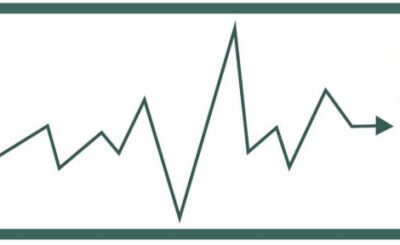The IPO market has seen a lot of changes in recent years. Once a popular way for companies to go public, the IPO market has taken a backseat to private funding in recent years. But what is causing this shift, and what does it mean for the future of IPOs?
This article will look at the IPO market’s history and examine some of the factors that have led to its decline. It’ll also explore potential solutions that could revive the market and make it more appealing to businesses and investors.
Stay tuned!
The history of the IPO market
The history of the IPO market can be traced back to the early days of the stock market. In the beginning, only a handful of companies went public. The first company to list on the New York Stock Exchange (NYSE) was the Bank of North America in 1792. In 1812, John Jacob Astor incorporated The American Fur Company, which became the first corporation to trade on the NYSE.
The number of IPOs began to increase in the late 1800s as more and more companies sought to raise capital by going public. The early 1900s was a particularly active period for IPOs, with over 1,000 companies listing on the NYSE between 1904 and 1914.
The IPO market underwent a significant transformation in the 1980s when new securities laws made it easier for companies to go public. Before these changes, only a small number of large firms had access to the capital markets. But the new rules opened the IPO market to a much more comprehensive range of companies, including many smaller ones.
Since then, the IPO market has continued to evolve. In recent years, we’ve seen the rise of tech IPOs and a renewed interest in IPOs from traditional industries such as healthcare and finance.
The IPO market is expected to continue to grow in the coming years. This growth will be driven by several factors, including the continued expansion of the global economy and the rising demand for capital from fast-growing companies.
The benefits of IPOs for both companies and investors
IPOs have helped fuel market growth. For companies, going public provides a way to raise capital to finance expansion and other strategic initiatives. For investors, IPOs offer an opportunity to participate in the early stages of a company’s growth.
Despite the many benefits of IPOs, there are also some risks that companies and investors should be aware of. One critical risk is that a company’s stock price may decline shortly after its IPO. This can happen if the company fails to meet expectations or if the overall market conditions turn unfavourable.
Another risk is that another firm may acquire a company before it can fully realise its potential. This can happen if another company bids for the firm during its IPO. While this can be a positive outcome for shareholders, it can also lead to the loss of potential upside if the acquiring company pays a low price.
Despite these risks, the IPO market continues to attract companies and investors worldwide. And as this market continues to grow and evolve, we can expect to see even more exciting IPOs in the years ahead.
How to invest in an IPO
If you’re interested in investing in an IPO through an online platform such as Saxo, you should know a few things.
First, it’s essential to understand that IPOs can be risky investments. This is because relatively young companies issue most IPOs with no long track record.
Another thing to remember is that you’ll typically need to be an accredited investor to participate in an IPO. Accredited investors are individuals with a net worth of $1 million or more or households with an annual income of $200,000.
If you meet these requirements, there are a few ways you can invest in an IPO. One option is to work with a broker-dealer who specialises in IPOs. These firms can help you with upcoming research IPOs and place an order.
Another option is to participate in an IPO through a crowdfunding platform. These platforms allow accredited investors to pool their money together to invest in high-growth companies.
Finally, you can invest directly in an IPO through the company itself. This is typically only an option for more prominent institutional investors, but it’s something to keep in mind if you’re interested in this investment.
IPOs can be a great way to get in on the ground floor of a promising company. But it’s important to remember that they’re also risky investments. So, before you commit any money, do your homework and understand the risks!
The bottom line
The IPO market has come a long way since the early days of the Internet boom. While some companies still go public too early, the overall quality and sophistication of the IPO process have increased significantly. This is good news for both investors and entrepreneurs alike. With a better understanding of how the IPO market works, we can make more informed decisions about when to take our companies public.








